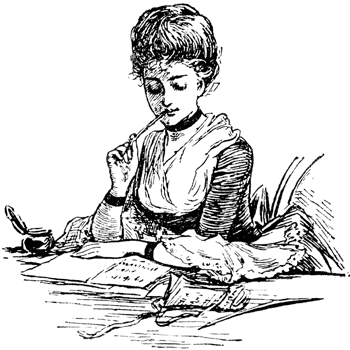
Actually I came to this conclusion around the 20th of November. I wasn’t completely finished with the narrative of my main character but I knew I had little left to write and forcing more words out would just be a waste of time. I stopped writing for a few days, thinking about the story and writing in general. I considered various alternatives for amplifying the story, even going so far as the possibility of writing a completely new story and adding it in – two 30,000-word works would certainly exceed the 50,000 word minimum. There is no rule that says you can’t do that (in fact there aren’t really any rules at all about what you write). But that led me to the next thought – what if it was the same story told by another person? It’s been done before in books, and more popularly in movies. How interesting to view the same things through different eyes!
So I started writing about another, previously secondary, character in the story. Her personal history and how she experienced the main character’s story, and the later events that befell them together and separately, made up the rest of the book.
I was also wondering about novellas. Whatever happened to the novella? I don’t usually rely on Wikipedia as a primary source, but it does provide a good composite definition of the genre:
A novella has generally fewer conflicts than a novel, yet more complicated ones than a short story. The conflicts also have more time to develop than in short stories. They have endings that are located at the brink of change. Unlike novels, they are not divided into chapters, and are often intended to be read at a single sitting, as the short story, although white space is often used to divide the sections. They maintain, therefore, a single effect.I like this definition, as opposed to simply applying a random word count to differentiate the shorter novella to the novel.
Judging by Wikipedia’s list of notable novellas, the genre hit its peak in the late 1800s – early 1900s. Famous books include Animal Farm, A Christmas Carol, Heart of Darkness, Of Mice and Men, The Strange Case of Dr. Jeckyl and Mr. Hyde.
There are several modern books on the notable novella list, but they are only an imperceptible fraction of the total works of fiction published in the last 30 years.
Why? Is it because of book prices? I suppose if I’m going to pay $25.95 for a hardcover (or whatever they’re going for these days) I would like it to be a hefty tome of at least 500 pages. Short stories are okay, but there’d better be a lot of them for the price.
Or maybe it’s the cost of printing? Or a marketing challenge – which bookstore shelf would feature something that isn’t a full-length novel?
Or is it just that readers don’t know what the novella is and so shy away from it unless it’s from a highly popular, productive author. I may be part of the problem rather than the solution. I don’t think I have ever bought a novella, and if I did, it was because I thought it was a novel.
So, my story is finished, at least for NaNoWriMo purposes, and it's a bit over 50,000 words, before editing. Too long to be read in a single sitting, so it doesn’t meet that criterion for a novella. Plus, it does have chapters. On the other hand, the conflicts are few and complex, and the story ends as the characters are on the brink of change.
I think it is a novella. And I’m glad it's done! Sort of. I think I'll have a few more comments on the topic when I get some distance from it. Soon I’ll be back to happy, crafty, lightweight things.
Katrina
Glad to hear that it's done! Perhaps some editing after distance is achieved will bring it into novella status. :-)
ReplyDeleteHave fun with the happy, crafty things!
xo, Anita